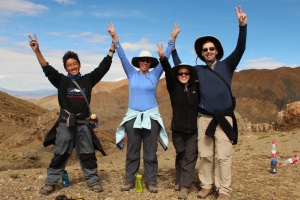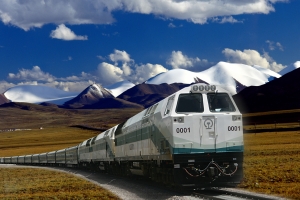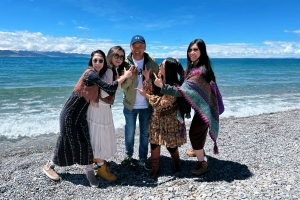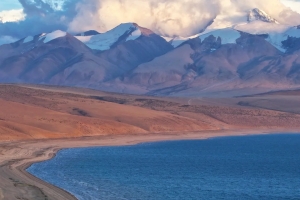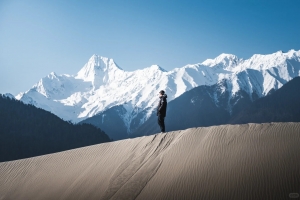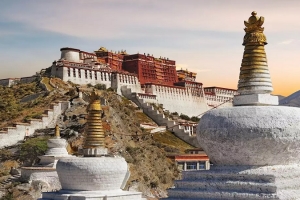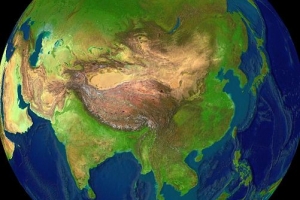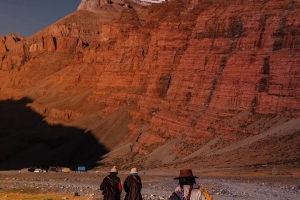Lhasa is the heartbeat of the Tibetan Plateau and the capital of Tibet: a city that feels both ancient and alive, spiritual and everyday, elevated in altitude and in atmosphere. For first-time visitors and returning pilgrims alike, Lhasa offers dramatic palaces, prayer-filled streets, and a sunlight-soaked climate that seems designed for slow afternoons and steady wonder. This guide will walk you through the essentials — history, weather, practical travel tips, must-see sites, food and etiquette and altitude advice — so you can make the most of your journey to Tibet’s capital.
Where Lhasa Sits And Why It Matters
Lhasa literally means “place of the gods,” a name that hints at its deep religious role for Tibetan Buddhism and the central place it holds in Tibetan identity. The city lies in a broad valley of the Tibetan Plateau, north of the Himalayan ridge, and sits at roughly 3,650 meters (about 11,975 feet) above sea level. Its location makes it both spectacular and vulnerable: spectacular because of sweeping high-altitude panoramas and vulnerable because the thin air affects visitors in ways that demand respect and preparation.
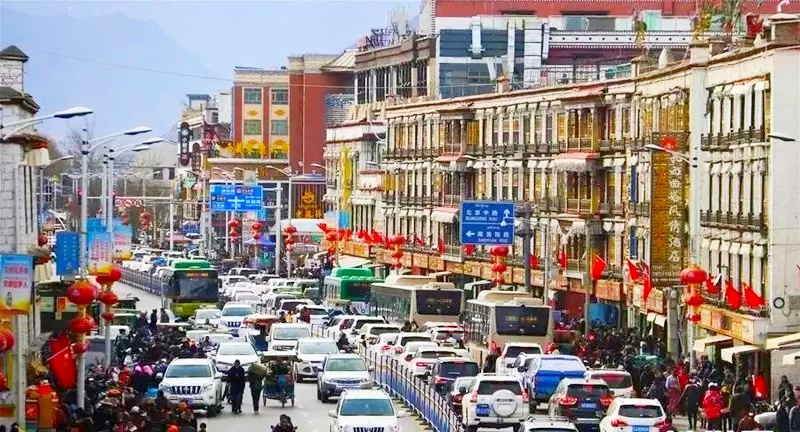
Lhasa City
A Short History about Lhasa
Lhasa’s story begins in the 7th century when Songtsän Gampo centralized power across much of Tibet and established the area around the Jokhang and Potala sites as the symbolic heart of the realm. Over many centuries the city became a fusion of political authority and spiritual leadership — especially under the Dalai Lamas — with monumental monasteries and palaces rising on the city’s hills. The modern image of Lhasa you’ll encounter — a mix of whitewashed walls, red-roofed palaces, and prayer flags — grew from those layered centuries of royal, religious, and civic life. The Potala Palace, Jokhang Temple and Norbulingka together form the Historic Ensemble that UNESCO recognizes for its outstanding universal value.
When To Visit Lhasa: Seasons, Sunshine And Weather Patterns
Lhasa is nicknamed the “Sunshine City” — the region sees a very high number of sunshine hours each year, making it ideal for clear views and sunlit explorations. Yet the weather is famously changeable: the same day can bring summer warmth at noon and a fresh chill by midnight. The typical “best” window for tourists is from late spring through early autumn, roughly April to October. The rainy season is concentrated in summer, but rains often fall overnight or in short bursts, so they rarely ruin daytime sightseeing. If your goal is bright skies and comfortable days, aim for late spring and early autumn. But if you want to sunbathe and experience the brilliant low-humidity winter light, many travelers visit in winter for that crystalline clarity — just come prepared for cooler temperatures.
Getting Lhasa: Roads, Rails And Flights
Lhasa’s evolving transport network now connects it by air, rail, and road to major hubs. The Qinghai–Tibet Railway — an engineering marvel and the highest railway line in the world — made it possible to ride into Lhasa by train from cities like Xining and, via longer routes, from China’s major metropolises. Lhasa Gonggar Airport also accepts flights from multiple domestic gateways and limited international carriers. Overland highways link Lhasa to neighboring Tibetan cities and to international border routes. Choosing between train and plane is often a question of time, budget, and how you want to acclimatize: trains give time to adapt slowly; planes get you there faster but with a sharper altitude transition.
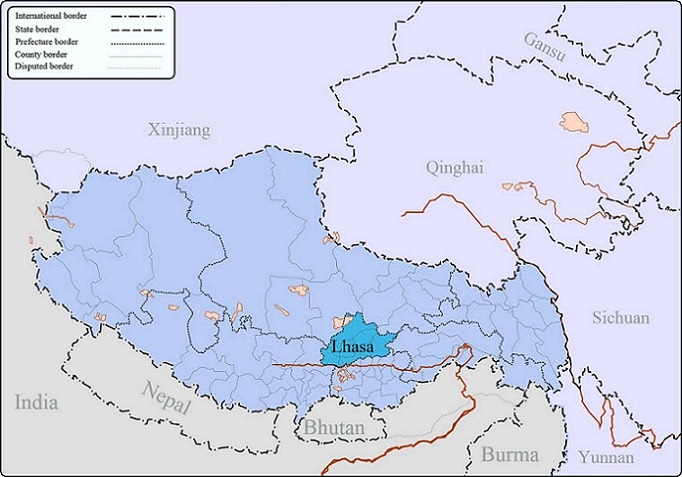
Lhasa Location Map
Lhasa Major Sights: Potala, Jokhang, Norbulingka And The Old Town
The Potala Palace — Monumental Symbolism
No first visit to Lhasa is complete without seeing the Potala Palace. Perched on Marpori Hill, this fortress-like complex was historically the Dalai Lama’s palace and the political-religious nerve center of Tibet. The architecture is a towering study in stacked white and red buildings, chapels, stupas, and narrow passageways holding centuries of murals and ritual objects. The Potala’s size and art make it a place to wander slowly and reflect.
Jokhang Temple — The Spiritual Heart
Located in Lhasa’s old town, the Jokhang Temple is a living worship center and the focus of daily pilgrimages. Inside is the revered Jowo Shakyamuni statue — one of the most sacred images for Tibetan Buddhists — and outside, the Barkhor circuit forms one of the best places to watch devotion in practice. Pilgrims circumambulate the temple, prostrate on the pavements, and fill the air with the soft clink of prayer beads and the scent of incense. The energy here is immediate and humbling.
Norbulingka — The Summer Retreat
Norbulingka, often called the Summer Palace, served as the Dalai Lamas’ seasonal residence and gardens. The greenery, ornate pavilions, and measured calm make Norbulingka an excellent counterpoint to the busy spiritual drama of Jokhang and the Potala’s stately presence. If you visit in summer, the flower beds and tree shade offer a refreshing breath of alpine garden life.
Barkhor Street And The Old Town
Winding around Jokhang, Barkhor Street is Lhasa’s most atmospheric pedestrian circuit: traders, prayer wheels, pilgrims, and photographers converge here. Expect colorful handicrafts, prayer flags, yak-wool textiles, and street scenes that feel like a living museum of Tibetan daily life. Bargaining is common; friendly curiosity earns you better prices than blunt haggling.
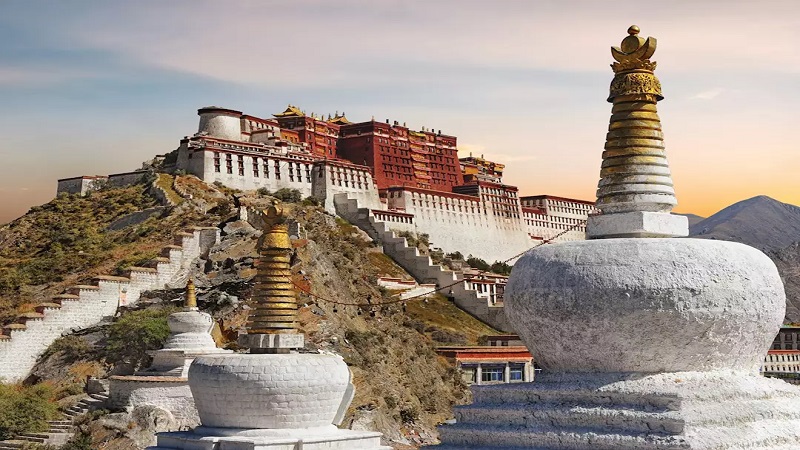
Potala Palace
Food To Try In Lhasa
Tibetan cuisine is hearty and high-altitude-friendly. Look for local staples such as tsampa (roasted barley flour usually mixed into dough or porridge), butter tea (a salty, rich brew made with yak butter), yak meat in various preparations, and fermented or fresh yak dairy like yogurt. Many Lhasa restaurants now offer more varied menus for international visitors, but seeking out street stalls and family-run eateries will reward you with authenticity and warmth.
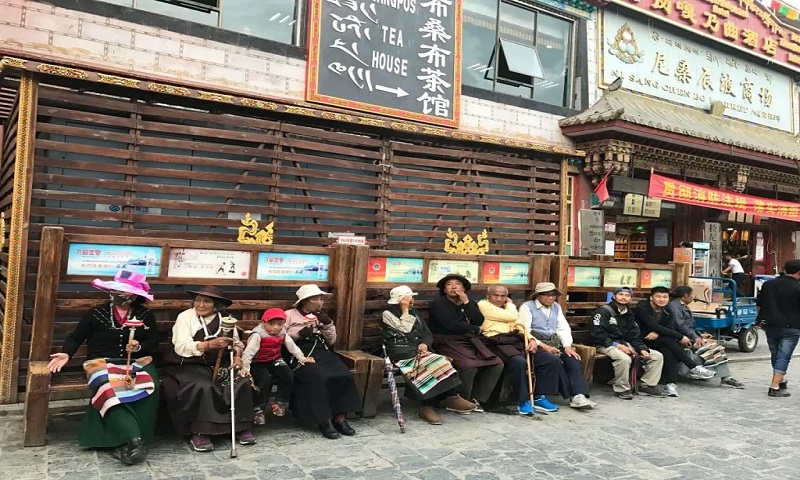
Barkhor Street Lhasa
Acclimatization And Altitude Safety at Lhasa
At 3,650 meters, Lhasa challenges the body in subtle and obvious ways. Altitude sickness is real: symptoms range from mild headaches and sleeplessness to severe breathlessness. The single best strategies are to go slow for the first 24–72 hours, hydrate well, avoid heavy exertion, and listen to your body. Many travelers plan an easy first day with only short walks and rest. For those prone to severe altitude issues or with cardiorespiratory conditions, consult a physician before travel and consider medications or oxygen support if recommended. Carry basic altitude-care items — hydration salts, acetazolamide if advised by a doctor, and a simple pulse oximeter if you find comfort in monitoring.
Why Lhasa Still Feels Sacred
Walking Lhasa’s streets, you’ll notice rituals woven into daily rhythms: prayer wheels turning, butter lamps glowing at dusk, and the soft cadence of recitation. That living spirituality gives the city a texture different from mere sightseeing: visitors become witnesses to practices sustained across centuries. Lhasa’s sacredness isn’t just in its monuments — it’s in the flows of devotion and ordinary life that continue around them.
Lhasa Travel Practical Tips: Permits, Money, And Local Etiquette
Permits And Travel Rules
International visitors to Tibet usually require special travel permits in addition to the standard visa. These regulations change occasionally and are typically handled by local tour operators; independent travel is generally restricted for foreigners, so many visitors book a guided package that includes the necessary paperwork.
Money And Connectivity
Cash is commonly used in smaller shops and markets, though larger hotels and some restaurants accept major cards. Mobile connectivity varies; plan for limited data in some locations and download offline maps in advance.
Respectful Behavior
Tibetan religious life includes devoted rituals. When you visit monasteries or see people prostrating, observe respectfully: ask before photographing individuals, dress modestly (cover shoulders and knees), avoid loud behavior, and follow any posted rules about entry or photo restrictions.
What To Pack For Lhasa
- High-SPF sunscreen, sunglasses, and a wide-brimmed hat — the high-altitude sun is intense.
- Layers: temperatures swing dramatically from morning to night.
- Comfortable walking shoes with good grip for uneven monastery steps and cobbled lanes.
- A reusable water bottle and electrolyte mixes.
- Basic first-aid and altitude-care supplies.
- A small offering (like a packet of incense or a simple donation) will be appreciated in monasteries.
About Journey2tibet — Local Expertise You Can Trust
If you’d like help turning these ideas into a seamless trip, Journey2tibet specializes in customized tours for international travelers eager to experience Lhasa and the broader Tibetan Plateau. We arrange permits, comfortable transfers, knowledgeable local guides, and itineraries paced for acclimatization and cultural immersion — from sunrise at Jokhang to sunset views of the Potala. Whether you want a short city-focused visit or a longer exploration of sacred sites, high passes and remote lakes, Journey2tibet can craft a trip that balances safety, authenticity, and unforgettable moments.
Lhasa rewards visitors who arrive with curiosity and humility. Prepare for altitude, pack for sun and sudden chills, and leave space in your schedule for unplanned encounters: a monk’s quiet smile, a pilgrim’s careful step, a sky that turns magenta over a thousand-year-old rooftop. This is a city that asks you to slow down — and in doing so, offers a return far greater than the speed of arrival.


